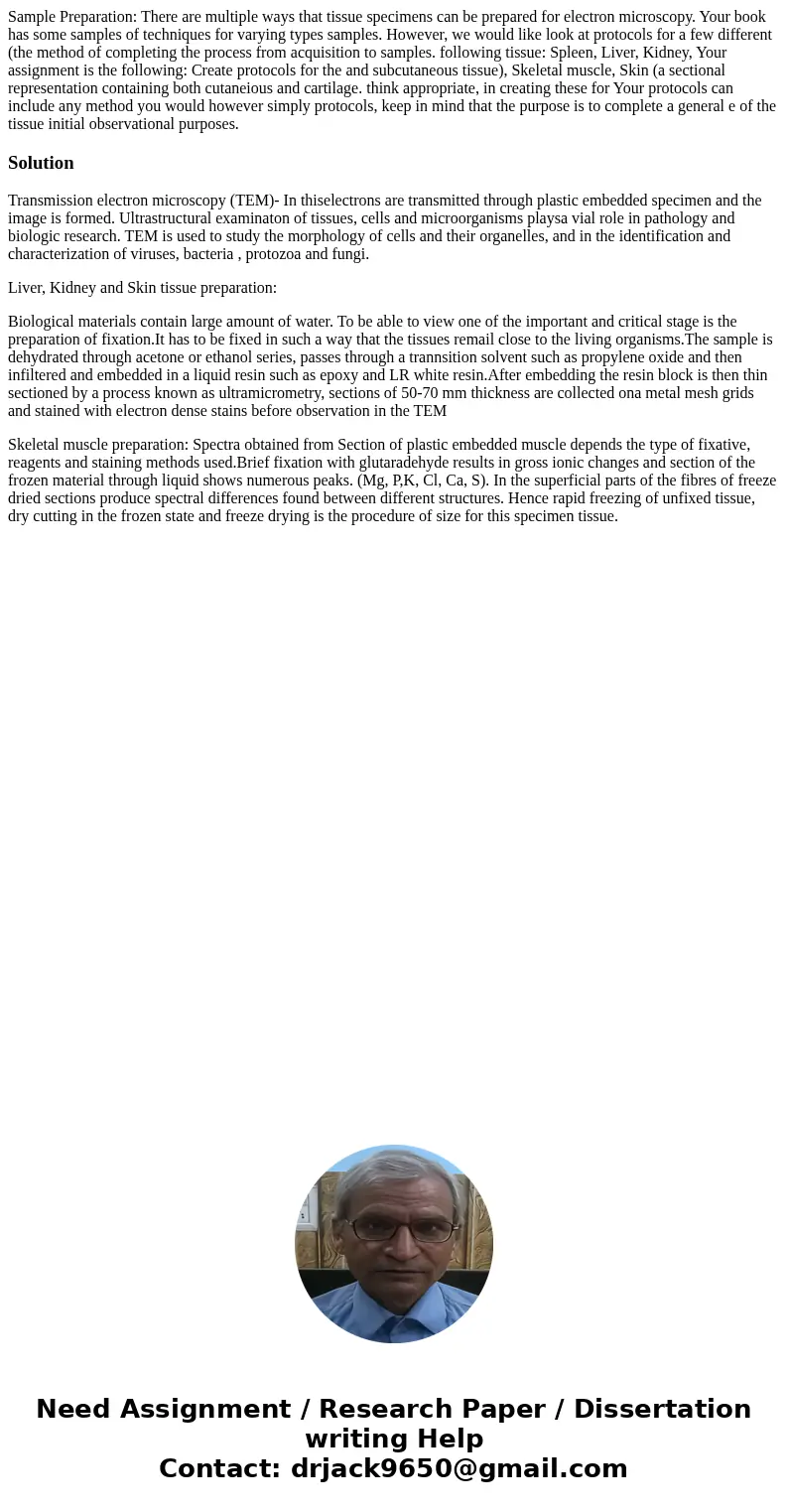Sample Preparation There are multiple ways that tissue speci
Solution
Transmission electron microscopy (TEM)- In thiselectrons are transmitted through plastic embedded specimen and the image is formed. Ultrastructural examinaton of tissues, cells and microorganisms playsa vial role in pathology and biologic research. TEM is used to study the morphology of cells and their organelles, and in the identification and characterization of viruses, bacteria , protozoa and fungi.
Liver, Kidney and Skin tissue preparation:
Biological materials contain large amount of water. To be able to view one of the important and critical stage is the preparation of fixation.It has to be fixed in such a way that the tissues remail close to the living organisms.The sample is dehydrated through acetone or ethanol series, passes through a trannsition solvent such as propylene oxide and then infiltered and embedded in a liquid resin such as epoxy and LR white resin.After embedding the resin block is then thin sectioned by a process known as ultramicrometry, sections of 50-70 mm thickness are collected ona metal mesh grids and stained with electron dense stains before observation in the TEM
Skeletal muscle preparation: Spectra obtained from Section of plastic embedded muscle depends the type of fixative, reagents and staining methods used.Brief fixation with glutaradehyde results in gross ionic changes and section of the frozen material through liquid shows numerous peaks. (Mg, P,K, Cl, Ca, S). In the superficial parts of the fibres of freeze dried sections produce spectral differences found between different structures. Hence rapid freezing of unfixed tissue, dry cutting in the frozen state and freeze drying is the procedure of size for this specimen tissue.

 Homework Sourse
Homework Sourse